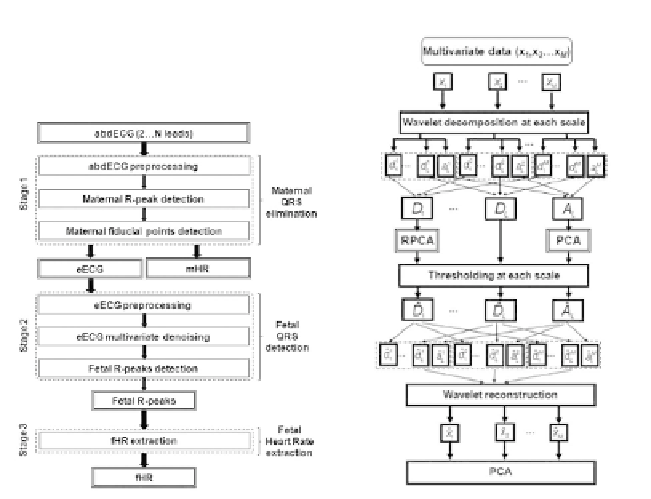Biomedical Engineering Reference
In-Depth Information
[Cerutti et al., 1986]. The method of fHRV estimation based on the minimization of
a cost function that measures the differences between the discrete Fourier transform
(DFT) of the fetal ECG waveform and the DFTs of its circularly shifted forms was
proposed in [Sahin et al., 2010]. By using the linear phase shift property of the DFT,
they showed that the minimization of this cost function is equivalent to finding the
cosine waveform that matches best to the fECG power spectrum. The optimal cosine
waveform was then used to estimate the fundamental period of fHRV.
The problem of separating the components of fHRV was approached as well by
means of empirical mode decomposition by Ortiz et al. [Ortiz et al., 2005]. High fre-
quency fHRV modes were obtained by application of EMD followed by the recon-
struction of components above 0.3 Hz. The results showed differences in the power
of frequency components for the episodes connected with breathing movements and
body movements versus quiet epochs.
(a) (b)
FIGURE 4.41:
(a) Flowchart of the methodology of fetal heat rate extraction. (b)
Flowchart of the multivariate denoising technique. From [Karvounis et al., 2009].
A three stage method involving different signal analysis techniques for extracting
fECG and determination of fHRV was proposed by [Karvounis et al., 2009]. The
methodology can be applied to two or more channels. The flowchart of the method is
shown in Figure 4.41 (a). The first stage involved mECG elimination. After filtering







Search WWH ::

Custom Search